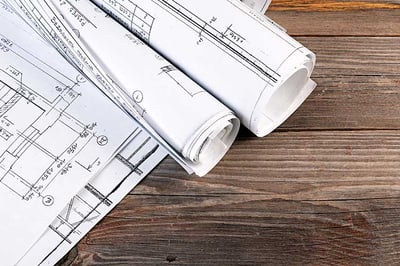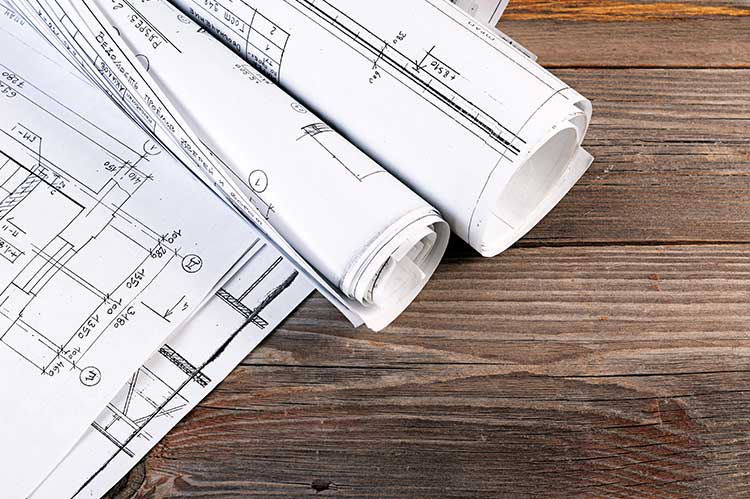 No matter what type of building you are planning to construct – a commercial warehouse, industrial or manufacturing facility, hospital, or school – designing reliable, functional rooftop support systems are essential to protecting the health and safety of occupants and the service men and women responsible for maintaining the equipment located there.
No matter what type of building you are planning to construct – a commercial warehouse, industrial or manufacturing facility, hospital, or school – designing reliable, functional rooftop support systems are essential to protecting the health and safety of occupants and the service men and women responsible for maintaining the equipment located there.
As the space inside a structure becomes increasingly more valuable, building managers are utilizing rooftop space more and more. With this increased usage, there also becomes an increased demand placed on the rooftop support systems that are needed to safely secure the piping, ductwork, and other crucial operational systems. In other words, if the design and installation of a proper support system is not part of the discussion during the first planning stages of new construction, the entire project could be at risk. To avoid such risk one option is to consult an engineer to receive a PE stamp.
Here are all the things you need to know about a PE Stamp for your rooftop support systems:
What is Reviewed?
With so much at stake, it’s no surprise that many building project managers turn to Professional Engineers (PEs) to review and assess the size, quality, and other important characteristics of their rooftop pipe and equipment support systems.
When a PE approves a plan, he or she is certifying that the design meets all known local building standards and regulations, thereby reducing the potential liability for building owners, designers, architects, and other engineers involved with the project.
Who can become a PE?
Professional Engineers are experienced, licensed professionals bound by the highest standards of excellence and ethics in their fields. According to National Society of Professional Engineers PE’s must:
- Earn a four-year degree in engineering from an accredited engineering program
- Pass the Fundamentals of Engineering (FE) exam
- Complete four years of progressive engineering experience under another PE
- Pass the Principles & Practice of Engineering (PE) exam
- Earn a license from their state's licensure board
Additionally, in order to retain their licenses, PEs must work to continually maintain and improve their skills throughout their entire careers.
What is a PE Stamp?
Upon receiving their PE license, individuals are able to register with the state in which they plan to practice and receive a personalized stamp with their license number on it. PEs can then use this stamp of approval after preparing or carefully reviewing their clients’ engineering plans and drawings. It is also important to note that PEs are only able to certify and submit plans in the state in which they received their license.
Are PEs Always Necessary?
Successfully engineering and selecting the proper supports to correctly distribute weight, enhance safety, and preserve rooftop warranties can be a very demanding endeavor. A single unplanned roof penetration or support failure could have catastrophic consequences during a severe weather event.
While it is always a good idea to have a PE review any building plan, actual requirements do vary from state to state. Here in Texas for example, a member of the Texas Board of Professional Engineers is required to review projects that make use of public money with planned expenditures greater than $8,000, construction of all two-story buildings, and apartment buildings of eight units or more. So no, a PE stamp is not always necessary.
City and Town Requirements
One of the most common issues that will often require a PE stamp is when a structure is planned for a location that is known for experiencing hazardous natural events such as seismic events (earthquakes), exceptionally high winds, soil erosion, flooding, or mountainous regions that experience very high snowfall amounts.
While Professional Engineers are not required to supervise projects during construction, their familiarity with weather and other unique conditions of a specific location allow PEs to be able to quickly assess building designs and recommend alternative, more appropriate building features and components when necessary.
The Manufacturers’ Role
Some vendors, especially those who specialize in designing and manufacturing custom rooftop support systems, often submit detailed plans prior to actually manufacturing the supports. This way, when construction begins, contractors can be sure that the entire rooftop system is in compliance with state and local building codes – avoiding potentially costly delays.
Photo Credit: Will Scullin





